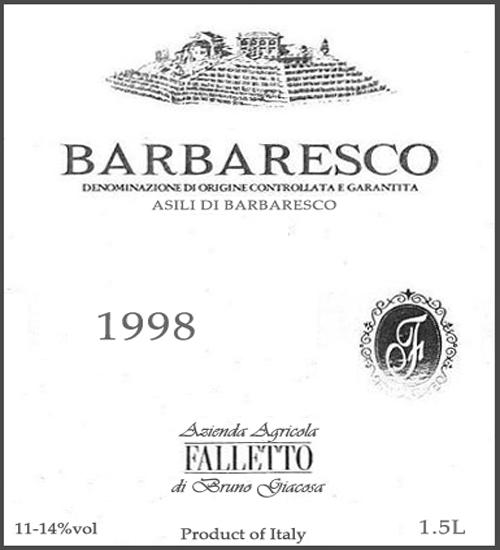1998 Barbaresco Nebbiolo
The Bruno Giacosa Barbaresco from the esteemed 1998 vintage is a remarkable expression of the Nebbiolo varietal, showcasing the elegance and complexity that the Barbaresco region is renowned for. This wine exhibits a beautiful ruby-red color, hinting at its rich character. On the palate, it is medium-bodied with a vibrant acidity that lends a bright liveliness, perfectly balancing the wine’s flavors. The fruit intensity is prominent, highlighted by notes of cherry, plum, and subtle floral undertones, while earthy nuances and hints of spice add depth and intrigue. Its tannins are notably structured, providing a firm backbone that supports its age-worthy potential. This wine is beautifully dry, making it an exceptional pairing with rich dishes, or a delight to savor on its own. Overall, the Bruno Giacosa Barbaresco is a stunning representation of its origin, offering a complex and rewarding tasting experience.
The Bruno Giacosa Barbaresco from the esteemed 1998 vintage is a remarkable expression of the Nebbiolo varietal, showcasing the elegance and complexity that the Barbaresco region is renowned for. This wine exhibits a beautiful ruby-red color, hinting at its rich character. On the palate, it is medium-bodied with a vibrant acidity that lends a bright liveliness, perfectly balancing the wine’s flavors. The fruit intensity is prominent, highlighted by notes of cherry, plum, and subtle floral undertones, while earthy nuances and hints of spice add depth and intrigue. Its tannins are notably structured, providing a firm backbone that supports its age-worthy potential. This wine is beautifully dry, making it an exceptional pairing with rich dishes, or a delight to savor on its own. Overall, the Bruno Giacosa Barbaresco is a stunning representation of its origin, offering a complex and rewarding tasting experience.




